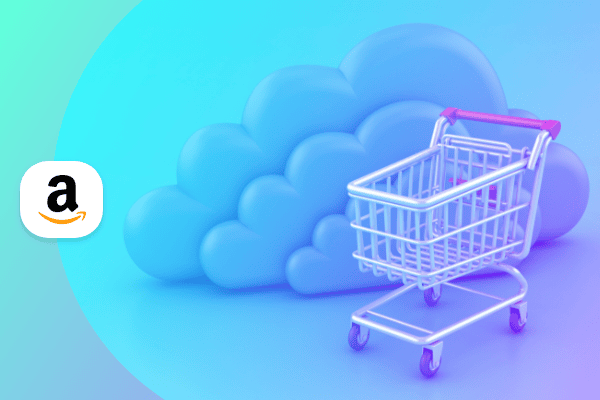Summary
At ShopAble 2025, industry leaders explored how generative AI is transforming commerce media strategies. As AI tools like ChatGPT and ShopGPT reshape the customer journey, marketers must evolve content, optimize for AI-driven discovery, and strengthen brand trust to stay ahead.
ShopAble 2025 is an annual commerce media event hosted by Skai, gathering marketing leaders, industry innovators, and brand executives to explore emerging trends and practical strategies driving the future of commerce. Held in New York, ShopAble offered candid insights, actionable takeaways, and real-world stories from the forefront of retail media, generative AI, and omnichannel marketing.

One of the biggest shifts discussed at this year’s event: how quickly generative AI is reshaping the way consumers discover and buy products. As AI-powered search and shopping tools accelerate, the customer journey is collapsing into a far more dynamic, conversational path to purchase—forcing marketers to rethink how they show up and how they measure success.
This conversation was front and center in From ChatGPT to ShopGPT: GenAI’s Role in Commerce Media, where Skai’s Josh Dreller sat down with three experts to explore how marketers can start preparing for what’s next:
- Lauren Schiavone, Founder & Lead Consultant at Wonder Consulting
- Briana Cifelli, Sr. Director of Retail Media at Jellyfish
- Dr. Ram Singh, Chief Data Officer at Horizon Commerce (formerly Night Market)
You can watch the full session recording here.
GenAI is redefining the customer journey
Schiavone: “The path to purchase is evolving really quickly and that’s being driven by AI. Search is shifting—Gartner expects that search will decline by about 25% this year as consumers shift their searches to products like ChatGPT. And consumers trust these platforms: about 63% of consumers say they would trust a brand recommendation from an answer engine like ChatGPT.
“E-commerce search will evolve to AI answers. Historically, consumers would sift through a lot of search results. Now, in just a matter of seconds, you can get a custom, personalized response. As e-commerce leaders, conversations will shift from share of search to share of Rufus.”
Singh: “This will fundamentally change where advertising shows up in the path. Your message probably needs to be broken down in multiple pieces because that search is now conversational. There may be five queries, and you have to come back with five pieces of the response that tie together to affect that decision.”
Changing product discovery
Cifelli: “I think it goes back to how people are searching. People want to know what other people are saying about your products. AI is summarizing reviews—on Amazon, for example, it makes it very clear what the product’s purpose is and what people are saying about it. And it’s crucial to make sure your product detail pages have the right details, that your titles and descriptions are up to date, with all of the right assets.”
Singh: “Do this exercise: take your reviews, feed them to ChatGPT, and ask it to give you a thematic extraction of keywords or personality that reviews are showing. Then compare that with your product detail pages. You’ll often find a distinct difference between what the reviews are saying and what your product is communicating.”
Schiavone: “Tools like ChatGPT—one of the number one places they’re going for product information is your brand website. Who has drastically deprioritized their brand website in the last few years? Most brands.
“The other day I was auditing a brand and I went to their brand website and I was like, oh my gosh, this doesn’t say anything. So as the first step, when you go home today, take a look at your brand website. Does it answer consumer questions? Tools like ChatGPT are going to go for product information as they answer consumer questions.”
Why brand will matter even more in an AI-powered journey
Singh: “Reviews will matter, content will matter, what you say about your brand and what others say about your brand will matter. You also have to realize that search is changing. There may be areas in your brand marketing you traditionally didn’t need to address—you need to put content out there for those gaps.”
Schiavone: “I think brand becomes more important. The strategy remains the same: you want to be top of mind for consumers. The best thing you could do for your brand is have a consumer go in and do a branded search on ShopGPT versus a non-branded search.”
Singh: “I think it’s an excellent poin—that space up top is getting shorter and consumers will make that choice as soon as they’re presented with that choice because it does go back to don’t put the work on me. If there is a solution that makes it easier for me to jump on something, I’ll do that. So I’ll pay a premium to go to that brand because I already know them. The onus is now on us to be able to say, if we don’t show up for these kinds of searches, how do you make your brand go up there? You’re making the journey easy for them.”
How marketers should adapt content and media strategies
Cifelli: “At Jellyfish, we have a tool—Share of Model—that gives a singular view of what AIs are saying about your brands. It’s really important to see what the customer sentiment is, what they’re talking about, what they like or don’t like. You can use that in your content strategy, your targeting and optimization strategy, and your ad assets.”
Schiavone: “It’s difficult to predict exactly what the future will look like. The bet I would make is on agility—being lean, experimenting often, learning fast, and staying informed so that you’re ready no matter what the business landscape looks like.”
Commerce media in a GenAI world: what’s next
Singh: “There are certain things GenAI is asking us to implement. You should be using more of what you already have. You probably have systems in place and data in place that you’re not fully utilizing for high compute methods. And with AI models, you no longer have to run everything in an A/B format or ask for a separate budget to run tests—you can build in constant experimentation and correction.”
Schiavone: “You’re absolutely going to see new advertising formats and tools, and you’re going to see advertising in places where it doesn’t exist today. We’re seeing signs of that—there’s experimentation happening within [Amazon] Rufus and on tools like Perplexity. The best thing you can do is to get into those tools now, start to understand how they work, so that when advertising is possible, you’re ready.”
Key takeaways for marketers
The customer journey is collapsing into AI-powered conversations. As consumers turn to AI agents like ChatGPT and ShopGPT, traditional funnel thinking must evolve. Expect new conversational touchpoints and fewer clear signals between discovery, consideration, and purchase.
Search behavior is shifting—fast. Gartner projects a 25% decline in traditional search this year. Marketers must rethink “share of search” and start tracking “share of answer” or “share of Rufus” across emerging AI-driven platforms.
Content must now serve both people and AI agents. Product content and reviews must be optimized not only for human shoppers but also for AI summarization and recommendation engines. Regularly audit how AI platforms interpret your brand.
Brand trust will be even more critical. In AI-driven shopping experiences, familiar brands have an advantage. Building strong brand equity will influence AI-driven recommendations and consumer choices.
Measurement must evolve with the journey. Traditional models like MMM won’t fully capture AI-driven shopping paths. New measurement approaches are needed to track impact across fragmented conversational and agent-driven journeys.
Agility is the new superpower. The pace of change demands lean teams, rapid experimentation, and constant learning. The brands that stay informed and move fast will xoutpace those waiting for a “steady state.”
AI is a growth accelerator—not just an efficiency play. The opportunity isn’t just to speed up decisions, but to unlock new growth, better insights, and smarter strategies. Focus on how GenAI can drive business outcomes, not just productivity gains.
As AI-driven commerce tools continue to evolve, one thing is clear: marketers who embrace this shift now will be best positioned to navigate a rapidly changing path to purchase.
You can watch the full session recording here.
Frequently Asked Questions
Generative AI like ShopGPT is streamlining the customer journey by enabling AI-powered search and conversational shopping experiences. This shift requires marketers to adapt their commerce media strategies to focus on optimized content, brand trust, and seamless engagement across AI-driven platforms.
In an AI-powered commerce media environment, trusted brands are more likely to be recommended by AI agents like ChatGPT and ShopGPT. Strong brand equity helps ensure your products appear prominently in AI-driven search results, influencing consumer decisions faster.
Marketers should audit and optimize their content for both consumers and AI agents, embrace rapid experimentation, and track new metrics like “share of answer.” Staying agile and informed allows brands to capitalize on opportunities in evolving AI-driven commerce media strategies.







